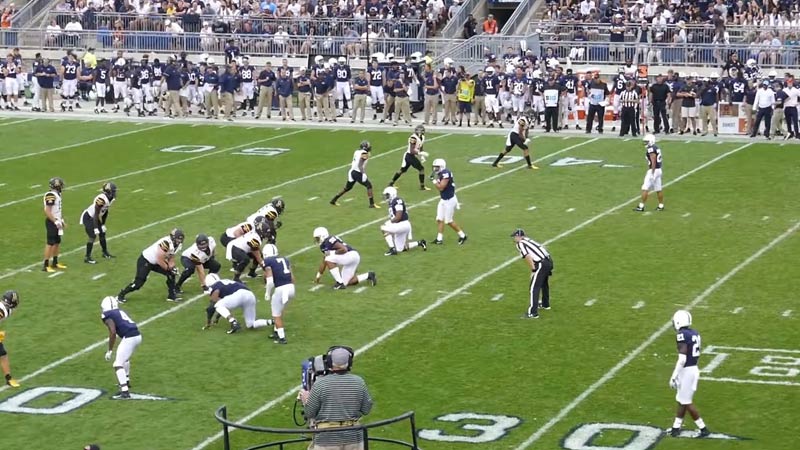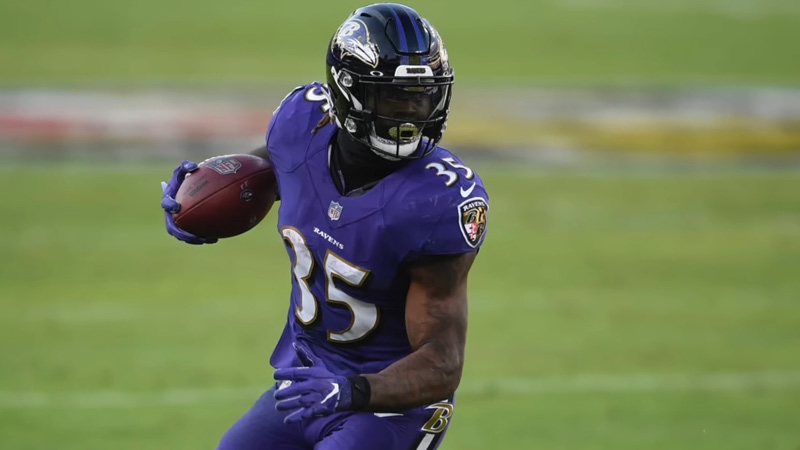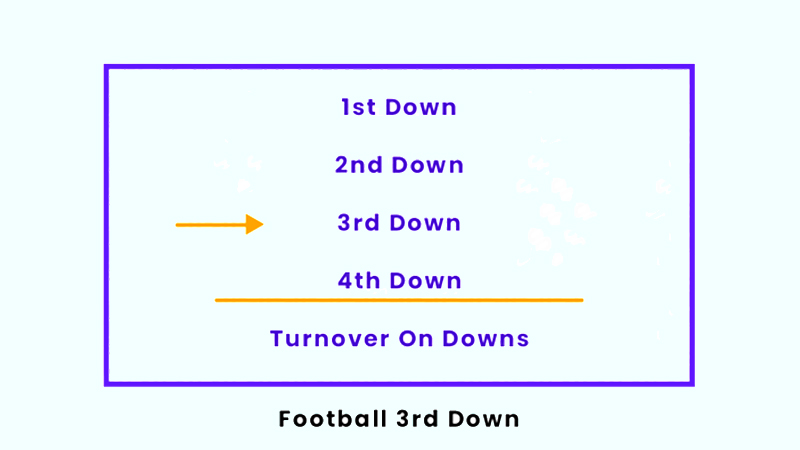In the high-stakes world of American football, the term “3rd down” carries a weight that transcends its numerical significance.
This pivotal moment encapsulates the essence of strategic warfare on the gridiron. The importance of 3rd down in football is etched into the psyche of players, coaches, and fans alike.
It is the juncture where offensive prowess meets defensive resilience, where inches can mean the difference between maintaining possession or surrendering it.
Third down encapsulates the essence of pressure, decision-making, and execution, where a team’s fate hinges on their ability to convert, prolonging their offensive march or succumbing to the relentless pursuit of the opposition.
Why Is 3rd Down So Important in Football?
In American football, 3rd down is a pivotal moment in any given drive.
This crucial down holds immense significance because it often determines whether a team will maintain possession of the ball and continue their offensive march down the field or if they will be forced to surrender possession to the opposing team through a punt or field goal attempt.
The importance of 3rd down in football is attributed to several key factors:
Down-and-Distance
The down-and-distance situation on 3rd down is a pivotal moment because it demands offensive teams to come up with a play that can gain a substantial yardage.
In the NFL, it’s often 10 yards to go for a first down, which is no easy feat. Teams must choose their plays wisely, factoring in their playbook, the situation on the field, and their opponent’s defensive tendencies.
Strategic Decision-Making
Coaches must make strategic decisions on 3rd down based on a multitude of variables, including the score, time on the clock, field position, and the flow of the game.
These decisions can include choosing between a pass or a run play, deciding to go for it on 4th down if the distance isn’t too great, or attempting a long field goal. The consequences of these choices can impact the outcome of the game.
Defensive Pressure
On 3rd down, defensive teams often dial up the pressure. This can involve sending extra pass rushers, playing tighter coverage on receivers, or employing various stunts and schemes to disrupt the offense’s rhythm.
The threat of a turnover or a sack can significantly affect the quarterback’s decision-making.
Field Position
Field position is a critical element in football, and 3rd downplays a substantial role in determining it.
If an offense fails to convert on 3rd down and is deep in its territory, it may have to punt from its own end zone, giving the opposing team excellent field position and a higher chance of scoring.
Momentum Shifts
Successfully converting on 3rd down can create a surge of momentum for the offense. It can invigorate players and fans alike, while simultaneously deflating the opposing defense.
Conversely, a failure on 3rd down can lead to a shift in momentum, as the defense gains confidence and the offense feels frustrated.
Time of Possession
Time of possession is a critical aspect of game strategy. A successful 3rd-down conversion allows the offense to sustain its drive, run more plays, and control the clock. This can limit the opportunities the opposing offense has to score and can be particularly valuable when protecting a lead.
Red Zone Efficiency
Inside the red zone, where scoring opportunities are most significant, 3rd-down efficiency becomes even more critical.
Failing to convert on 3rd down in this area often results in settling for a field goal, which can mean the difference between a touchdown and just three points. In tight games, those missed opportunities can be game-changers.
Psychological Impact
The psychological aspect of 3rd down cannot be understated. Successfully converting on 3rd down not only provides tangible benefits but also affects the mental state of both teams.
It can boost the confidence of the offense and make the defense question its abilities. Conversely, a stop on 3rd down can galvanize the defense and demoralize the offense.
Challenges on Third Down in Football

Third down in football is a pivotal and challenging phase of the game for both the offense and defense.
Here are some key challenges faced by teams on third down:
Distance to First Down
One of the primary challenges on third down is the distance that must be covered to achieve a first down. In the NFL, it’s typically 10 yards, but it can vary in other football leagues.
Overcoming this substantial yardage can be challenging, especially when the defense is aware of the passing threat.
Defensive Pressure
Defenses often apply intense pressure on third down. This includes sending additional pass rushers, blitz packages, and complex coverage schemes to disrupt the quarterback’s rhythm and limit options for the offense.
Complex Play Calling
Coordinators and quarterbacks face the challenge of selecting the right play for the situation. They must consider the down-and-distance, the field position, the score, and the defensive alignment to choose an effective play that increases the likelihood of success.
Tight Coverage
Defensive backs often play tighter coverage on third down to prevent receivers from gaining separation.
This can make it harder for quarterbacks to complete passes, and receivers must run precise routes to create separation.
Execution Under Pressure
Third-down situations add extra pressure to the offense. Quarterbacks must make quick decisions and accurate throws, while receivers need to catch the ball under tight coverage. Offensive linemen must protect the quarterback against aggressive pass rushes.
Variability
Defenses can be unpredictable on third down, mixing coverage schemes and blitzes to keep offenses guessing. This variability can make it difficult for offenses to anticipate what the defense will do.
Red Zone Challenges
Inside the red zone, where the field is shorter, the margin for error on third down becomes smaller. Converting in the red zone is crucial, but defenses often tighten up their coverage and pass rush in this area.
Time Management
Managing the clock effectively on third down is crucial, especially in late-game situations. Teams must strike a balance between using enough time to move the chains and conserving time for potential game-winning drives.
Audibles and Adjustments
Quarterbacks often have to make audibles or adjustments at the line of scrimmage based on the defensive alignment they see on third down. Making the right call under time pressure adds complexity.
Special Teams Considerations
In some situations, teams may opt to punt the ball on fourth down rather than risk failing to convert on third down. Deciding when to punt or go for it adds another layer of strategic complexity.
How Do You Calculate Yards in Football?

In football, yards are the unit of measurement used to track the progress of the offense and defense during a game.
Both offensive and defensive yards are calculated differently:
Offensive Yards
- Rushing Yards: These are the yards gained by a running back or any player carrying the football on the ground. The number of rushing yards is calculated by measuring the distance gained from the line of scrimmage (where the play starts) to the spot where the ball carrier is tackled or goes out of bounds.
- Passing Yards: These are the yards gained by the quarterback and receivers through completed passes. Passing yards are calculated by measuring the distance between the line of scrimmage and the spot where the receiver catches the ball. Any yards gained after the catch are also counted.
Defensive Yards
Yards Allowed: Defensive yards, also known as “yards allowed,” are the total yards gained by the opposing offense during the game. This includes rushing and passing yards. The defensive yards allowed are used to assess how effective a defense is at stopping the opposing offense.
What Is the Difference Between 3rd Down and 4th Down?
In the realm of American football, understanding the difference between 3rd down and 4th down is fundamental.
These downs play a pivotal role in determining a team’s offensive and defensive strategies and can ultimately influence the outcome of a game.
Let’s break it down:
| Key Differences | 3rd Down | 4th Down |
| Possession Status | Continues for the offense upon success. | Changes if not successfully converted. |
| Punting Option | Common outcome on failure. | Rarely used on failure; teams often go for it or attempt a field goal, depending on field position and score. |
| Field Position | Typically farther from the opponent’s end zone. | Can vary widely based on field position strategy; can be very close to the end zone if a team is in a scoring situation. |
| Risk and Reward | Relatively lower risk for the offense. | Higher risk for the offense, as failure often results in favorable field position for the opponent. |
| Strategic Choices | Often involves more conservative plays to secure the 1st down. | Opens the door for various strategic choices, including going for it, punting, or attempting a field goal, depending on the game situation. |
FAQS
What is the “two-minute drill,” and how does it relate to 3rd down?
The two-minute drill is a hurry-up offensive strategy often employed at the end of halves or games when a team is trailing and needs to quickly move down the field to score.
Why do teams sometimes opt to go for it on 4th down instead of punting or kicking a field goal?
Teams may choose to go for it on 4th down when they are in field goal range but believe that they have a higher chance of converting for a 1st down or scoring a touchdown.
Do certain football positions play a more critical role on 3rd down?
Yes, certain positions are often more involved on 3rd down plays. Quarterbacks, wide receivers, and running backs are key players as they execute passing and running plays crucial for converting.
How does weather impact the importance of 3rd down in football?
Adverse weather conditions, such as rain, snow, or strong winds, can make 3rd down even more critical.
Inclement weather affects passing accuracy and ball handling, making it harder to convert.
What role does game situation play in determining 3rd-down importance?
The game situation, including the score and time remaining, can greatly affect how important 3rd down becomes.
For example, in a close game, successfully converting on 3rd down can help control the clock and secure a win.
To Recap
In football, 3rd down stands as a defining moment, encapsulating the essence of strategy, skill, and tension that defines the sport.
It’s where the offense strives to extend its lifeline, where defenses battle to assert their dominance, and where the outcome of the game often teeters on a knife’s edge. The importance of 3rd down transcends mere statistics; it embodies the heart and soul of the game.
From the roar of the crowd to the calculated decisions of coaches, this down encapsulates the essence of football’s relentless pursuit of victory. It’s the down that makes every yard count, every decision crucial, and every game an unpredictable, electrifying spectacle.







